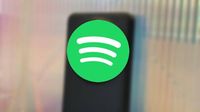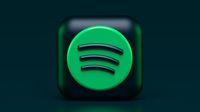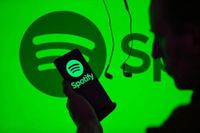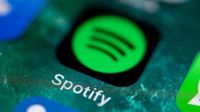On Wednesday, April 16, 2025, Spotify, the popular music streaming platform, experienced a significant global outage that left millions of users unable to access their favorite songs and podcasts. The incident began around 14:00 (peninsular time) and affected users across various countries, including Spain, the United States, and several Latin American nations such as Argentina, Colombia, and Chile. According to Downdetector, the first reports of issues surfaced shortly after the outage began, with users encountering error messages like "Unable to play the current song" and experiencing incomplete interfaces that failed to load properly.
Spotify, which boasts over 675 million monthly active users and more than 260 million paying subscribers, confirmed the widespread disruption via its official social media channels. In a tweet, the company stated, "We are aware of some issues right now and are checking them out!" This message was part of a series of updates provided by Spotify as they worked to resolve the problems.
Initially, users were left frustrated as they attempted to troubleshoot the issues on their end, with many trying basic solutions such as reinstalling the app or checking their internet connections. However, the problems were not isolated to individual users; they were indicative of a larger failure within Spotify's network infrastructure. The disruption rendered the app and website nearly unusable, with many users reporting that they could not log in or that content simply would not load.
As the outage persisted, social media platforms lit up with user complaints and inquiries, with hashtags like #SpotifyDown trending as people shared their experiences. Some users even speculated whether the outage might be the result of a cyberattack, particularly after a hacking group known as "Dark Storm" claimed responsibility. However, Spotify quickly dismissed these claims, stating, "The reports of this being a security hack are false." This clarification helped to alleviate some concerns among users who were anxious about the nature of the outage.
Approximately two hours after the initial reports began to surface, Spotify acknowledged the situation more formally, stating on their status page, "All clear – thanks for your patience. Get in touch with @SpotifyCares if you still need help." By this time, many users had already turned to alternative music streaming services such as Claro Música and YouTube Music to fill the void left by Spotify's failure.
As the afternoon progressed, Spotify began to restore functionality, and by around 17:30, users in Spain reported that the service was returning to normal. The company continued to update users on its progress, reassuring them that the technical difficulties were being addressed. By the end of the day, Spotify had successfully resolved the issues, allowing users to once again enjoy their music and podcasts without interruption.
Despite the swift resolution, the incident raised questions about the reliability of major digital platforms, particularly those with such a vast user base. Outages like these can have a significant impact on users who rely on Spotify for various activities, including studying, exercising, and unwinding after a long day. The service's freemium model, which offers both free and premium subscription options, adds complexity to the situation, as both tiers of users experienced the same disruptions.
In the wake of the outage, many users took to online forums and social media to discuss their experiences and share tips on how to check if a service is down. Websites like Downdetector provide real-time updates on service disruptions, allowing users to determine whether the issues are localized or widespread. This resource proved invaluable during the Spotify outage, as it helped users confirm that they were not alone in experiencing difficulties.
The outage also highlighted the importance of having alternative options available for music streaming. While Spotify is a dominant player in the industry, competing services like Apple Music and YouTube Music offer similar functionalities and vast libraries. Users who found themselves unable to access Spotify during the outage were reminded of the variety of choices available in the digital music landscape.
As the dust settles from this incident, Spotify will likely review its infrastructure and response strategies to prevent future outages. The company has a history of bouncing back from technical difficulties, but the challenge remains to maintain user trust and satisfaction in an increasingly competitive market. With millions of users relying on the platform daily, ensuring a seamless experience is crucial for Spotify's continued success.
In conclusion, the global outage of Spotify on April 16, 2025, serves as a reminder of the vulnerabilities that even the largest digital platforms face. As users return to their playlists and podcasts, they do so with the knowledge that while technical issues can disrupt their routines, alternative solutions are just a click away. The incident underscores the need for robust infrastructure and effective communication from service providers to keep users informed during such disruptions.










